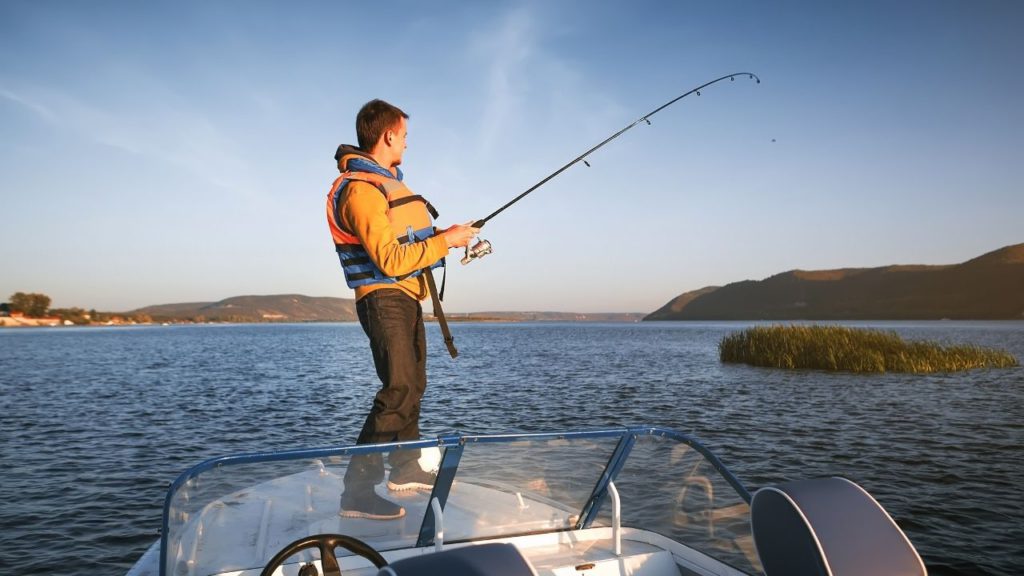You may be asking, “what is a jerkbait lure?” Although the name seems odd, luring bass with fake fish bait is practical and exciting throughout the year. You have a variety of jerkbait types and techniques to choose from. Plus, a multitude of conditions will determine which combination will yield the best fishing outcomes for you.
Jerkbait Lure: What Is It?
What is a jerkbait lure? It resembles a small baitfish like the American shad. You will find that the most common types are hard-body and soft-body jerkbaits. Fishermen usually apply a jerkbait technique wherein they twitch the lure to give the appearance of an injured fish.
How Do Jerkbaits Work?
The angler must create the jerkbait action with the rod and line. Each time you jerk the rod, the dead bait shoots off in different directions while reeling the lure in. Although the lure is not alive, the stop-and-go motion will attract bigger fish looking to snag an easy kill.
What Are the Types of Jerkbait?
There are two types of jerkbait that you can use to catch bass – hard-body and soft-body jerkbaits.
Soft Jerkbaits

As its name implies, soft jerkbaits or flukes have a soft body with and life-like texture and features. The motion of soft jerkbaits appears more natural, shooting in all directions. Their squishier bodies can deceive bass that bites into them for longer. You will have more time to catch the bass with a proper hook set.
The only downside is that soft-body jerkbaits are prone to damage from vicious fish attacks. They are especially vulnerable to the unwanted teeth of multiple pickerels.
Hard Jerkbaits

Hard-body jerkbaits use strong plastic that mimics the fish body. The majority of these jerkbaits look like crank-baits. If floating jerkbaits float while sinking jerkbaits sink, what is a suspending jerkbait?
Floating
Floating jerkbaits are best in shallow water and high-density vegetation areas because they initially stay above the surface. With each jerk of the rod tip, you are adjusting the lure. Eventually, the front lip plunges the bait as you retrieve them.
Sinking
Sinking jerkbaits are ideal for deeper waters because they sink at different rates until you jerk the rod. You can check for the sink rate on the package measured by feet per second. The countdown method can also tell you how deep you lower the bait after counting each second.
Suspending
The most common neutrally-buoyant jerkbait is perfect for cold and open waters. Plus, you will plunge the bait barely below the water surface after casting.
How to Use a Jerkbait Lure

- Use your wrist to jerk your rod and reel in the slack between each jerk while you work the bait. You do not want a tight line to hamper the lure action. Using hard-body jerkbaits limits your fishing location based on the subcategory. However, you can use soft-body jerkbaits anywhere, thanks to their weedless properties.
Pro tip: You can use weight to send soft-body jerkbaits into lower depths. - For floating baits, let them float and jerk them down a few inches back and forth as a topwater bait. On the other hand, sinking baits, should reach the deep end by feeding some line before applying action. Keep the rod low for suspending baits as you jerk to achieve the desired depth. Then, maintain this depth by holding the rod out and parallel to the surface.
Pro Tip: Rig soft-body baits perfectly straight to avoid line twists. - The rhythm of retrieving the bait depends on the water conditions and fish behavior at the time. You can use quick jerks with short pauses for more aggressive bass. Use the more rapid jerks for warmer water and slower jerks in colder water. The general cadence is jerk, jerk, and pause.
Where to Use a Jerkbait?
You can use jerkbait lures along deep docks, rocks, ditches, and various areas in lakes where bass hide during the winter. Look for flats, tributaries, shorelines, and deep water weeds in autumn.
Clear water:
- Great area to use jerkbaits as site lures
- Jerkbait usually becomes more effective as water clarity increases
- Just like humans, fish enjoy seeing farther in clear water
- Fish will travel further to snack on bait
- Best to use rapid jerks with short break
Windy banks:
- Ideal area combines clear water and windy banks
- Wind push bait up into shallows
- Bass use opportunity to begin feeding
- Wind blurs water clarity which sounds bad at first
- Bass have tougher time determining if bait is genuine or fake
Vertical drops:
- Best for jerkbaits during winter and early spring
- Fish more desperate to feed during food scarcity
- Bass swim up and back down into deep water
- Provides a false sense of security
- Cold water fish prefer slower moving lures with long breaks
Jerkbait Lure FAQ
Can You Use Jerkbaits in Summer?
It is best to optimize your technique depending on each season–especially as the water gets warmer. For summer, use rapid jerks with short pauses to attract aggressive bass. Quicken your retrieve and use bolder colors, but be careful as these fish are more likely to break your line.
When Should I Use a Jerkbait?
You can use a jerkbait whenever you want to go fishing. Using a high-quality jerkbait instead of live bait can even save you money in the long run. The right bait type and technique can make or break your results. If you practice enough, you can determine the best combination for each condition year-round.
What Season Do You Use Jerkbaits?
The summer is a great time to go fishing with the correct technique. Since many choose not to jerkbait during this season, you can enjoy less competition. Jerkbaits are great for luring in starving bass during the spring. Use slower jerking movements since they are still sluggish from the cold waters of fall and winter.
Conclusion
You began this article asking, “what is a jerkbait lure?” and now you have a full grasp of what these lures are and how you can use them to your advantage. Remember, you will need to practice and use the best technique to lure bass with a jerkbait successfully.
Table of Contents



